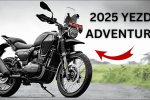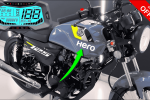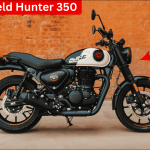
The Royal Enfield Hunter 350 has revolutionized the accessibility of the iconic Royal Enfield brand, opening doors for countless riders who previously considered Royal Enfield motorcycles beyond their reach. This neo-retro roadster has successfully bridged the gap between Royal Enfield’s classic heritage and modern practicality, making it an attractive proposition for urban commuters and weekend enthusiasts alike. Recently updated with refinements that enhance its appeal, the Hunter 350 has undergone comprehensive real-world testing to determine its actual fuel efficiency performance.
Our extensive testing regime put the Hunter 350 through rigorous real-world scenarios, evaluating its fuel consumption patterns across diverse riding conditions. The results provide valuable insights into what riders can realistically expect from this increasingly popular motorcycle in terms of fuel economy, helping potential buyers make informed decisions based on actual performance data rather than manufacturer claims.
Comprehensive Real-World Fuel Efficiency Results
The Royal Enfield Hunter 350 demonstrated impressive fuel efficiency figures during our standardized testing procedures, showcasing its practical credentials as an everyday motorcycle. The testing methodology involved separate evaluation sessions for highway and city riding conditions, providing a complete picture of the motorcycle’s fuel consumption characteristics across different environments.
Detailed Fuel Economy Test Results
| Riding Condition | Distance Covered | Fuel Consumed | Fuel Efficiency | Test Environment |
|---|---|---|---|---|
| Highway Riding | 50+ km | 1.30 liters | 39.8 kmpl | Open roads, consistent speeds |
| City Riding | 50+ km | 1.70 liters | 30.6 kmpl | Mumbai traffic, stop-go conditions |
| Overall Average | 100+ km combined | 3.00 liters | 35.2 kmpl | Mixed riding conditions |
The highway figure of 39.8 kmpl represents excellent efficiency for a 350cc motorcycle, demonstrating the Hunter’s capability for long-distance touring and highway commuting. The city figure of 30.6 kmpl, while lower due to traffic conditions, still represents commendable efficiency for urban riding scenarios.
Technical Specifications and Performance Analysis
The Royal Enfield Hunter 350 shares its fundamental powertrain architecture with other motorcycles in Royal Enfield’s 350cc lineup, including the Classic, Meteor, and Bullet models. However, several factors contribute to its superior fuel efficiency performance compared to its siblings.
Engine and Performance Specifications
| Specification | Details | Impact on Efficiency |
|---|---|---|
| Engine Capacity | 349cc single-cylinder | Optimal balance of power and efficiency |
| Engine Type | Air-cooled, single-cylinder, SOHC | Simple, reliable architecture |
| Throttle Mapping | Optimized for Hunter’s character | Enhanced response and efficiency |
| Gearing | Same as other 350cc RE models | Proven gear ratios |
| Kerb Weight | Lighter than Classic/Meteor | Reduced load on engine |
| Riding Position | Upright, comfortable | Efficient aerodynamics |
Factors Contributing to Superior Fuel Efficiency
The Hunter 350’s impressive fuel economy results from a combination of engineering decisions and design optimizations that prioritize efficiency without compromising the quintessential Royal Enfield riding experience.
Weight Advantage and Engineering Benefits: The most significant factor contributing to the Hunter’s excellent fuel efficiency is its reduced kerb weight compared to other motorcycles in Royal Enfield’s 350cc lineup. This weight reduction means the engine operates under less stress during both acceleration and cruising, resulting in lower fuel consumption across all riding conditions.
Comparative Analysis with Royal Enfield 350cc Family
| Model | Estimated Kerb Weight | Typical Fuel Efficiency | Weight Advantage |
|---|---|---|---|
| Hunter 350 | ~177 kg | 35+ kmpl combined | Lightest in lineup |
| Classic 350 | ~195 kg | 30-32 kmpl combined | 18kg heavier |
| Meteor 350 | ~191 kg | 32-34 kmpl combined | 14kg heavier |
| Bullet 350 | ~193 kg | 30-33 kmpl combined | 16kg heavier |
Highway Performance Analysis
The Hunter 350’s highway performance of 39.8 kmpl demonstrates exceptional efficiency for sustained high-speed riding. During highway testing, the motorcycle maintained consistent speeds while requiring minimal throttle input, allowing the engine to operate in its most efficient power band.
Highway Efficiency Factors:
- Reduced aerodynamic drag due to lighter weight
- Optimal engine loading at cruising speeds
- Minimal wind resistance from streamlined design
- Consistent throttle application reducing fuel waste
- Lower rolling resistance contributing to efficiency
The highway results indicate that the Hunter 350 is exceptionally well-suited for long-distance touring and intercity travel, where riders can expect outstanding fuel economy that translates to extended range and reduced fuel costs.
City Riding Performance Evaluation
The city fuel efficiency figure of 30.6 kmpl reflects the challenging conditions encountered during Mumbai traffic testing. Dense traffic conditions with frequent stop-and-go situations naturally impact fuel consumption, yet the Hunter managed to deliver respectable efficiency numbers.
City Riding Challenges and Performance
| Traffic Condition | Impact on Efficiency | Hunter’s Response |
|---|---|---|
| Heavy Traffic | Increased fuel consumption | Manageable impact due to light weight |
| Frequent Stops | Engine restart fuel usage | Quick warm-up minimizes waste |
| Low-Speed Crawling | Inefficient engine operation | Smooth throttle response helps |
| Traffic Light Delays | Idle fuel consumption | Engine efficiency maintains economy |
It’s important to note that the city testing occurred during unusually dense traffic conditions. Under normal city riding scenarios with moderate traffic, the Hunter 350 would likely achieve even better fuel efficiency, potentially reaching 32-34 kmpl in urban environments.
Testing Methodology and Standards
Our fuel efficiency testing follows a rigorous, standardized protocol designed to provide accurate, reproducible results that reflect real-world riding conditions. This methodology ensures that the data collected represents what actual riders can expect in their daily usage.
Testing Protocol Details
| Testing Phase | Procedure | Standards Maintained |
|---|---|---|
| Pre-Test Setup | Tank brimming, tire pressure verification | Manufacturer specifications |
| Route Selection | Fixed city and highway circuits | Consistent testing environment |
| Speed Maintenance | Real-world average speeds | Legal limits and traffic flow |
| Payload Consistency | Standardized rider weight and ballast | Fair comparison across vehicles |
| Post-Test Measurement | Precise fuel consumption calculation | Accurate tank-to-tank measurement |
Practical Implications for Riders
The Hunter 350’s fuel efficiency results have significant practical implications for daily riders, commuters, and touring enthusiasts. With fuel prices continuing to rise, the motorcycle’s excellent economy translates to substantial savings over time.
Cost-Benefit Analysis:
- Monthly fuel savings compared to less efficient motorcycles
- Extended range capabilities for touring
- Reduced frequency of fuel stops during long rides
- Lower overall running costs enhancing value proposition
Real-World Range Calculations
| Fuel Tank Capacity | Highway Range | City Range | Mixed Usage Range |
|---|---|---|---|
| 13 liters | ~517 km | ~398 km | ~458 km |
Comparison with Competitors
When compared to other motorcycles in the 300-400cc segment, the Hunter 350 demonstrates competitive fuel efficiency while offering the unique Royal Enfield character and build quality.
Segment Comparison Highlights:
- Superior highway efficiency compared to most 350cc alternatives
- Competitive city fuel economy despite challenging test conditions
- Excellent overall balance of performance and efficiency
- Strong value proposition in the neo-retro segment
Maintenance and Efficiency Optimization
To maintain the Hunter 350’s excellent fuel efficiency, riders should follow recommended maintenance schedules and adopt efficient riding practices. Regular servicing, proper tire pressure maintenance, and smooth throttle application can help achieve or even exceed the tested fuel economy figures.
Efficiency Optimization Tips:
- Maintain recommended tire pressures for optimal rolling resistance
- Follow regular service intervals for peak engine performance
- Adopt smooth acceleration and braking techniques
- Plan routes to minimize stop-and-go traffic when possible
- Keep the motorcycle clean and well-maintained for optimal aerodynamics
The Royal Enfield Hunter 350 successfully combines the brand’s heritage appeal with modern efficiency requirements, making it an excellent choice for riders seeking both character and practicality. Its impressive fuel economy figures validate its position as a practical daily rider while maintaining the distinctive Royal Enfield experience that has captivated motorcycling enthusiasts for generations.
Frequently Asked Questions
Q: What is the real-world fuel efficiency of the Royal Enfield Hunter 350? A: The Hunter 350 achieved 39.8 kmpl on highways and 30.6 kmpl in city traffic during comprehensive testing.
Q: How does the Hunter 350’s fuel efficiency compare to other Royal Enfield 350cc motorcycles? A: The Hunter 350 offers superior fuel economy due to its lighter weight compared to Classic, Meteor, and Bullet models.
Q: What factors contribute to the Hunter 350’s excellent fuel efficiency? A: The primary factor is its reduced kerb weight, which puts less stress on the engine during operation.
Q: Can riders expect better city fuel efficiency than the tested 30.6 kmpl? A: Yes, the city testing was conducted in unusually dense Mumbai traffic; normal conditions would likely yield 32-34 kmpl.
Q: What is the approximate range of the Hunter 350 with its 13-liter fuel tank? A: The Hunter 350 can achieve approximately 517 km on highways and 398 km in city conditions on a full tank.













